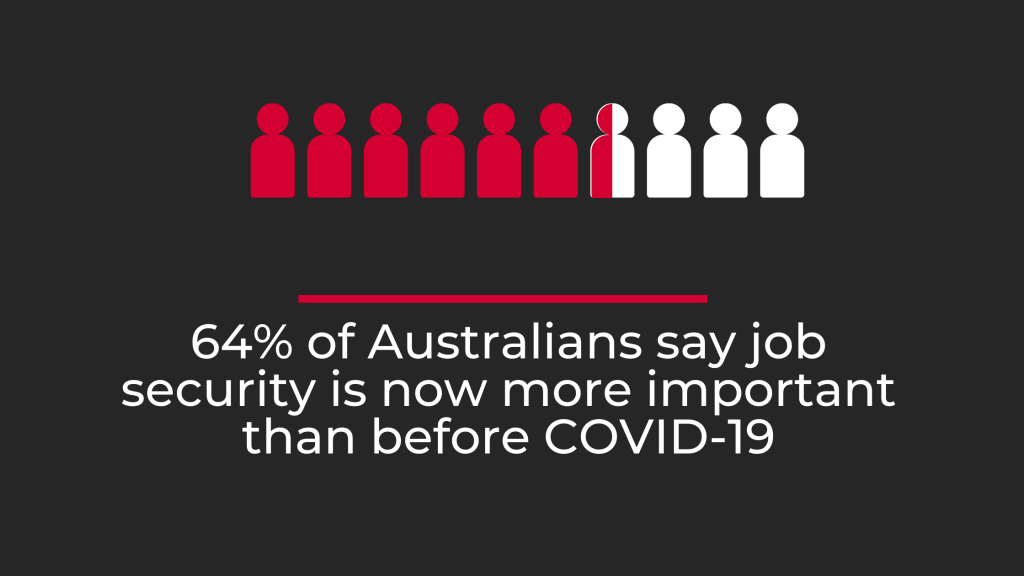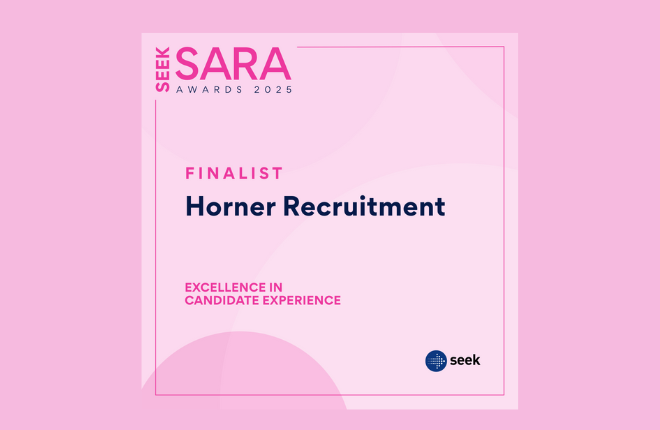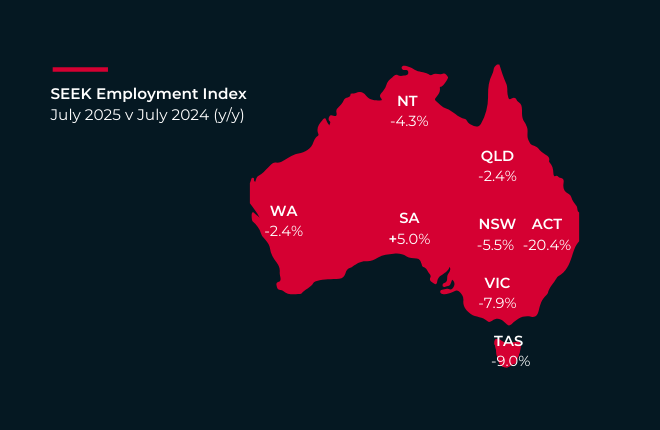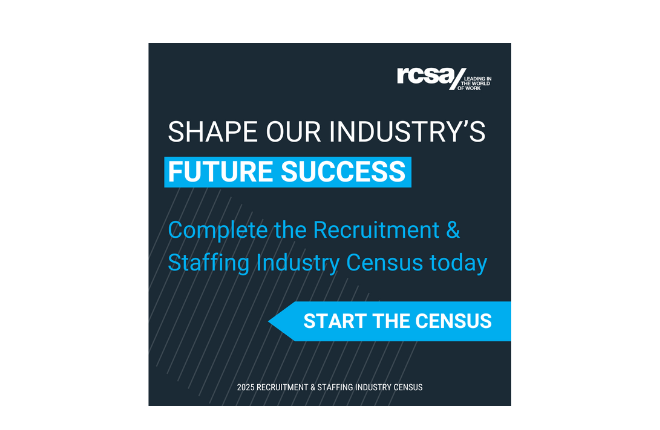How does the shift in candidate priorities impact your recruitment strategy?

Employment Trends
The employment landscape has changed significantly this year. The pandemic has also created a major shift of priorities by Australian workers and candidates.
Research* conducted by SEEK reveals that job security and flexible work arrangements are two of the key areas that have changed for job seekers compared to pre-COVID times.
It is important that employers (including hiring managers and talent acquisitions specialists) consider these changes in their recruitment strategy when looking for top talent.
While in some industries there is an influx of job seekers looking for work, however there are still many roles that are experiencing skill shortages including forklift drivers and healthcare professionals. The need for organisations to find top talent still remains.
What priorities have changed for job seekers and how does this impact your recruitment strategy?
Horner delves into the key findings on this topic from sources such as SEEK, AHRI and our own expert insights.
What do candidates care about now?
Some of the key findings are:
- Job security; according to SEEK* nearly two thirds (64%) of Australians say job security has become even more important to them compared to prior to COVID-19. 2 in 3 candidates were willing to trade of salary for job security.
- Moving industries or changing careers; SEEK reported that 2 in 5 candidates were considering moving to an industry or job less likely to be impacted by a similar future event as the pandemic. Candidates are focusing on their transferable skills to be able to move industries.
- Education & training; Insights from SEEK shows that one of the learnings from the GFC is that candidates may respond the downturn with a refocus on education and training. Candidates may have a closer look at how they can reskill in order to secure future employment.
- Financial security; with financial security now more important, job seekers would prefer permanent work over casual work. 1 in 2 were more hesitant to work as casual worker or contractor according to SEEK.
- Feelings of uncertainty and lack of control; this year has been unpredictable with many candidates having been stood down, made redundant or on reduced hours. Candidates have been unsure on how they will survive financially and what the future holds.
- Health and safety; candidates are concerned about the level of COVIDSafe practices at a new employer site as well as having to travel by public transport.
- Flexible working arrangements and Working from Home (WFH) expected; With working remotely and flexible hours having become the new norm this year, this will become an expectation for many candidates moving forward.
How does these shifts impact your recruitment strategy?
It’s important for talent acquisition specialists and hiring managers to be aware of the shift of priorities of candidates and changing employment landscape and adjust your recruitment advertising, interviewing and onboarding to meet the needs of the current employment market.
- Re-write your job adverts; If the role is casual or part time but has the potential for ongoing or permanent work then include this information in the job advert. Likewise, if you offer flexible working arrangements or working from home options then feature this information in your job advert.
- Be more open and transparent; with candidates more concerned about financial and job security they may want to know more about how the organisation they are joining is performing and financial stability of the company. During the recruitment process employers should be more open and transparent with candidates about their company performance and why they are looking to recruit.
- Reassess your talent pools; with some candidates moving industries and also moving states this may provide broader talent pool for hiring managers to access whilst could provide shortages in other areas. The shift to virtual recruitment and employees able to work remotely provides an opportunity to tap into a new pool of qualified, non-geographically based applicants to recruit talent from.
- Consider candidate’s transferable skills; COVID-19 has seen displaced workers from industries such as retail, travel and hospitality gain employment within supermarkets, call centres and supply chain logistics by candidates utilising their transferable skills. With more candidates looking to move industries, employers should look more openly at candidate’s transferable soft skills when reviewing resumes and undertaking interviews. Candidates from other industries can also bring a new ideas and perspective.
- Embrace virtual interviewing; with the use of technology, interviewing can be done virtually. When video interviewing ensure you let the candidate know the details for the interview, test run your technology and advise what the back-up plan is in case the technology fails.
- Ensure health and safety remains a priority; Ensure your workplace meets the required health and safety standards and has a COVIDSafe Plan to reassure your future employees in the recruitment process and on onboarding process that you take safety seriously and are doing all that you can to minimise risks.
- Offer flexible working arrangements and Working from home/remotely; As working from home has been normalised, moving forward most candidates will expect this to be an option for roles that can be undertaken remotely and may favour another organisation over yours that offer this option. According to AHRI’s pulse survey, nearly 50% of organisations will make permanent changes to their business as a result of the pandemic. Many organisations will move to a ‘hybrid’ situation with some employees working in the office and some working remotely.
- Improve virtual onboarding experience; If you need to onboard your new hire virtually, ensure they feel welcomed and confident. Make sure they have the necessary hardware, software and manuals they need and provided with training or handbooks digitally. You could set up one-on-one or group video meetings to meet other staff, send them a video of the office where they will eventually be working in, and schedule regular calls to see how they’re settling in.
- Maintain or increase communication and feedback; With many candidates having increased feelings of uncertainty and lack of control, it is important to remember this when communicating with them and provide feedback throughout the recruitment process. Advise candidates if they have been successful or unsuccessful.
Contact Horner to assist you with your recruitment strategy
Looking to tap into new talent pools? Or do you need assistance with adjusting your recruitment process or writing recruitment advertisements to appeal to the current talent pools?
Horner can provide virtual recruitment services in other geographical areas across Australia. We can also provide our recruitment services unbundled. For instances we can assist you with one or two steps of the process such as writing or re-writing your recruitment adverts, screening, applicant management, interviewing or onboarding.
Reach out to your local Horner branch or send an enquiry should you require assistance with part or full recruitment services.
*Source: Independent research conducted by Nature on behalf of SEEK. Interviewing 4800 Australians annually.

 Job Seekers
Job Seekers Resources
Resources Timesheets
Timesheets Submit a CV
Submit a CV Login
Login Temporary Staffing Solutions
Temporary Staffing Solutions Permanent Recruitment Solutions
Permanent Recruitment Solutions Executive Search
Executive Search Payroll Services
Payroll Services Modular Recruitment Services
Modular Recruitment Services Employer Resources
Employer Resources HR Services
HR Services WHS Consulting
WHS Consulting Outplacement / Career Transition
Outplacement / Career Transition Accounting and Finance
Accounting and Finance Business Support
Business Support Community Services
Community Services Customer Service
Customer Service Engineering
Engineering Events and Exhibitions
Events and Exhibitions Government
Government Healthcare
Healthcare Labour Hire
Labour Hire Manufacturing
Manufacturing Not-for-profit
Not-for-profit Sales and Marketing
Sales and Marketing Warehousing and Logistics
Warehousing and Logistics About us
About us Meet the Team
Meet the Team Blog
Blog Community
Community Join the Team
Join the Team Candidate Timesheet
and Portal Information
Candidate Timesheet
and Portal Information Blog
Blog Join the Team
Join the Team Payroll Services
Payroll Services Timesheets
Timesheets Customer Service
Customer Service Engineering
Engineering Warehousing & Logistics
Warehousing & Logistics

